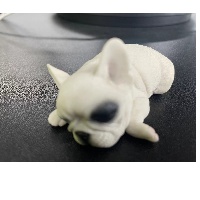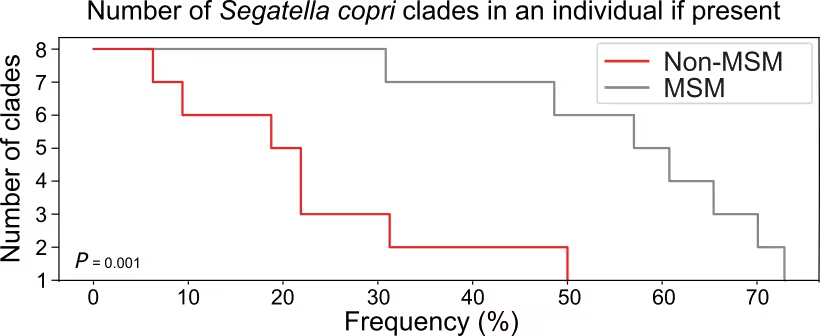文章MSM_metagenomics(五):共现分析
原创文章MSM_metagenomics(五):共现分析
原创
生信学习者
发布于 2024-06-16 08:35:43
发布于 2024-06-16 08:35:43
欢迎大家关注全网生信学习者系列:
- WX公zhong号:生信学习者
- Xiao hong书:生信学习者
- 知hu:生信学习者
- CDSN:生信学习者2
介绍
本教程是使用一个Python脚本来分析多种微生物(即strains, species, genus等)的共现模式。
数据
大家通过以下链接下载数据:
- 百度网盘链接:https://pan.baidu.com/s/1f1SyyvRfpNVO3sLYEblz1A
- 提取码: 请关注WX公zhong号生信学习者后台发送 复现msm 获取提取码
Python packages required
Co-presence pattern analysis
使用step_curve_drawer.py 做共线性分析
- 代码
#!/usr/bin/env python
"""
NAME: step_curve_drawer.py
DESCRIPTION: This script is to analyze the co-prsense of multiple species in different categories,
by drawing step curves.
"""
import pandas as pd
import seaborn as sns
import matplotlib.pyplot as plt
import sys
import argparse
import textwrap
def read_args(args):
# This function is to parse arguments
parser = argparse.ArgumentParser(formatter_class=argparse.RawDescriptionHelpFormatter,
description = textwrap.dedent('''\
This program is to do draw step curves to analyze co-presense of multiple species in different groups.
'''),
epilog = textwrap.dedent('''\
examples:step_curve_drawer.py --abundance_table <abundance_table_w_md.tsv> --variable <variable_name> --species_number <nr_sps> --output <output.svg>
'''))
parser.add_argument('--abundance_table',
nargs = '?',
help = 'Input the MetaPhlAn4 abundance table which contains only a group of species one wants to analyze their co-presense state, with metadata being wedged.',
type = str,
default = None)
parser.add_argument('--variable',
nargs = '?',
help = 'Specify the header of the variable in the metadata table you want to assess. For example, \
[Diet] variable columns has three categries - [vegan]/[Flexitarian]/[Omnivore].',
type = str,
default = None)
parser.add_argument('--minimum_abundance',
nargs = '?',
help = 'Specify the minimum abundance used for determining presense. note: [0, 100] and [0.0] by default',
type = float,
default = 0.0)
parser.add_argument('--species_number',
nargs = '?',
help = 'Specify the total number of multiple species in the analysis.',
type = int)
parser.add_argument('--output',
nargs = '?',
help = 'Specify the output figure name.',
type = str,
default = None)
parser.add_argument('--palette',
nargs = '?',
help = 'Input a tab-delimited mapping file where values are group names and keys are color codes.',
type = str,
default = None)
return vars(parser.parse_args())
class PandasDealer:
"""
This is an object for dealing pandas dataframe.
"""
def __init__(self, df_):
self.df_ = df_
def read_csv(self):
# Ths fucntion will read tab-delimitted file into a pandas dataframe.
return pd.read_csv(self.df_, sep = '\t', index_col = False, low_memory=False)
def rotate_df(self):
# this function is to rotate the metaphlan-style table into tidy dataframe to ease searching work,
df_ = self.read_csv()
df_rows_lists = df_.values.tolist()
rotated_df_dict = {df_.columns[0]: df_.columns[1:]}
for i in df_rows_lists:
rotated_df_dict[i[0]] = i[1:]
rotated_df = pd.DataFrame.from_dict(rotated_df_dict)
return rotated_df
class CopEstimator:
def __init__(self, sub_df_md):
self.sub_df_md = sub_df_md # sub_df_md: a subset of dataframe which contains only a group of species one wants to do co-presence analysis.
def make_copresense_df(self, factor, total_species_nr, threshold = 0.0):
# factor: the factor you want to assess the category percentage.
# total_species_nr: specify the total number of species you want to do co-presense analysis.
rotated_df = PandasDealer(self.sub_df_md)
rotated_df = rotated_df.rotate_df()
cols = rotated_df.columns[-total_species_nr: ].to_list()
categories = list(set(rotated_df[factor].to_list()))
copresense = []
cate_name = []
ratios = []
for c in categories:
sub_df = rotated_df[rotated_df[factor] == c]
species_group_df = sub_df[cols]
species_group_df = species_group_df.apply(pd.to_numeric)
species_group_df['total'] = species_group_df[cols].gt(threshold).sum(axis=1)
for i in range(1, total_species_nr + 1):
ratio = count_non_zero_rows(species_group_df, i)
copresense.append(i)
cate_name.append(c)
ratios.append(ratio)
return pd.DataFrame.from_dict({"copresense": copresense,
factor: cate_name,
"percentage": ratios})
def count_non_zero_rows(df_, nr):
total_rows = len(df_.index)
sub_df = df_[df_['total'] >= nr]
ratio = len(sub_df.index)/total_rows
return ratio
class VisualTools:
def __init__(self, processed_df, factor):
self.processed_df = processed_df
self.factor = factor
def step_curves(self, opt_name, palette = None):
categories = list(set(self.processed_df[self.factor].to_list()))
if palette:
palette_dict = {i.rstrip().split('\t')[0]: i.rstrip().split('\t')[1] for i in open(palette).readlines()}
for c in categories:
sub_df = self.processed_df[self.processed_df[self.factor] == c]
plt.step(sub_df["percentage"]*100, sub_df["copresense"], label = c, color = palette_dict[c])
else:
for c in categories:
sub_df = self.processed_df[self.processed_df[self.factor] == c]
plt.step(sub_df["percentage"]*100, sub_df["copresense"], label = c)
plt.title("Number of species in an individual if present")
plt.xlabel("Percentage")
plt.ylabel("Co-presense")
plt.legend(title = self.factor)
plt.savefig(opt_name, bbox_inches = "tight")
if __name__ == "__main__":
pars = read_args(sys.argv)
cop_obj = CopEstimator(pars['abundance_table'])
p_df = cop_obj.make_copresense_df(pars['variable'], pars['species_number'], pars['minimum_abundance'])
vis_obj = VisualTools(p_df, pars['variable'])
vis_obj.step_curves(pars['output'], palette = pars['palette'])- 用法
usage: step_curve_drawer.py [-h] [--abundance_table [ABUNDANCE_TABLE]] [--variable [VARIABLE]] [--minimum_abundance [MINIMUM_ABUNDANCE]] [--species_number [SPECIES_NUMBER]] [--output [OUTPUT]]
[--palette [PALETTE]]
This program is to do draw step curves to analyze co-presense of multiple species in different groups.
optional arguments:
-h, --help show this help message and exit
--abundance_table [ABUNDANCE_TABLE]
Input the MetaPhlAn4 abundance table which contains only a group of species one wants to analyze their co-presense state, with metadata being wedged.
--variable [VARIABLE]
Specify the header of the variable in the metadata table you want to assess. For example, [Diet] variable columns has three categries - [vegan]/[Flexitarian]/[Omnivore].
--minimum_abundance [MINIMUM_ABUNDANCE]
Specify the minimum abundance used for determining presense. note: [0, 100] and [0.0] by default
--species_number [SPECIES_NUMBER]
Specify the total number of multiple species in the analysis.
--output [OUTPUT] Specify the output figure name.
--palette [PALETTE] Input a tab-delimited mapping file where values are group names and keys are color codes.
examples:
python step_curve_drawer.py --abundance_table <abundance_table_w_md.tsv> --variable <variable_name> --species_number <nr_sps> --output <output.svg>为了演示step_curve_drawer.py的使用,我们将绘制基于metaphlan相对丰度表特定于Segatalla copri(之前称为Prevotella copri)的八个谱系:./data/mpa4_pcopri_abundances_md.tsv的共现模式,这些数据来自MSM和Non-MSM人群。MSM和Non-MSM样本将使用自定义颜色进行标记,颜色分配来自一个颜色映射文件color map file: ./data/copresence_color_map.tsv。
python step_curve_drawer.py \
--abundance_table mpa_pcopri_abundances_md.tsv \
--variable sexual_orientation \
--species_number 8 \
--palette copresence_color_map.tsv \
--output copresence_plot.png
原创声明:本文系作者授权腾讯云开发者社区发表,未经许可,不得转载。
如有侵权,请联系 cloudcommunity@tencent.com 删除。
原创声明:本文系作者授权腾讯云开发者社区发表,未经许可,不得转载。
如有侵权,请联系 cloudcommunity@tencent.com 删除。
评论
登录后参与评论
推荐阅读
目录